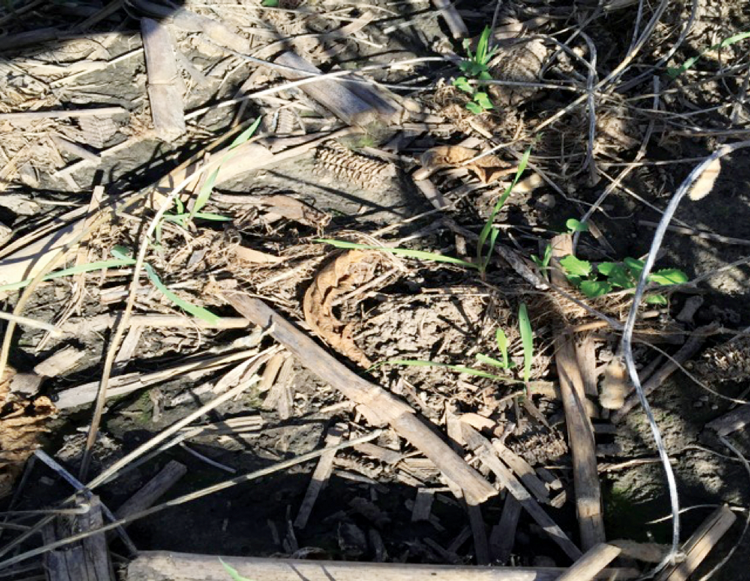Proven benefits of cover crops in a corn/soybean rotation have farmers re-evaluating their weed management programs. One critical risk to evaluate is residual herbicide use and potential carryover given the timing of cover crop seeding.
“One of our take-home messages for farmers is to base herbicide selection on weed control first, then adjust cover crop management accordingly,” said Alyssa Essman, Ohio State University weed science research associate.
Residual herbicides are important components of any prudent weed control program. However, their chemical longevity can push into fall or carry over into the next spring, damaging cover crop growth and reducing their effectiveness to improve soil health and suppress early spring weeds.
Essman points out university research by weed scientists has found several critical factors to consider when weighing potential carryover issues on cover crops:
- Residual herbicides that control grassy weeds can interfere with grass cover crop establishment.
- Broadleaf cover crops species are most impacted by ALS inhibitors (Group 2), PSII inhibitors (Group 5), PPO inhibitors (Group 14), and HPPD inhibitors (Group 27).
- Soybean herbicides that tend to be most injurious to cover crops are fomesafen, pyroxasulfone, imazethapyr, acetochlor, and sulfentrazone.
- Corn herbicides most injurious to cover crops are topramezone, mesotrione, clopyralid, isoxaflutole, pyroxasulfone, and nicosulfuron.
- Cover crops like cereal rye, hairy vetch and wheat tend to be the least sensitive to herbicide carryover. The more sensitive are tillage radish, Austrian winter pea, crimson clover and annual ryegrass.
- Research is still lacking to fully understand residual herbicides' impact on inter-seeded cover crops usually seeded in late June through July.
“Cereal rye is the gold standard for cover crops in terms of weed suppressive potential, and also one of the least sensitive to herbicide residue,” Essman said.
Weed scientists recommend checking herbicide labels to understand the half-life of all active ingredients in your herbicide program. This measurement estimates the time it takes for 50% of the applied rate of active ingredient to degrade, which is useful when matching herbicides with cover crop seeding dates.
For example, some longer-life active ingredients include fomesafen (100 days), isoxaflutole and tembotrione (50-120 days), imazethapyr (60-90 days), atrazine (60 days), and sulfentrazone (32-302 days).
Weather and soil
Below-normal rainfall or drought conditions can extend herbicide half-life late into and beyond the cropping season due to diminished soil microbial activity needed to break down the active ingredients. However, too much rainfall and warm temperatures can speed up degradation.
“In Ohio, we haven’t seen too many issues with carryover to cover crops, likely based on the amount of precipitation we get,” Essman added.
Other influential factors on herbicide half-life to watch for on the product label are soil pH and tillage recommendations. For example, you can reduce the odds of carryover for most herbicides by keeping pH in the 6.5 to 7 range.
And if drought prevents herbicides from dispersing not far below the soil surface, consider a tillage pass 4-6 inches deep to redistribute the concentrated herbicide to reduce carryover chances.
Due to many variables that can alter herbicide half-life, field bioassays can also help to determine possible injury. Check out this quick test method to assess carryover potential.





Post a comment
Report Abusive Comment